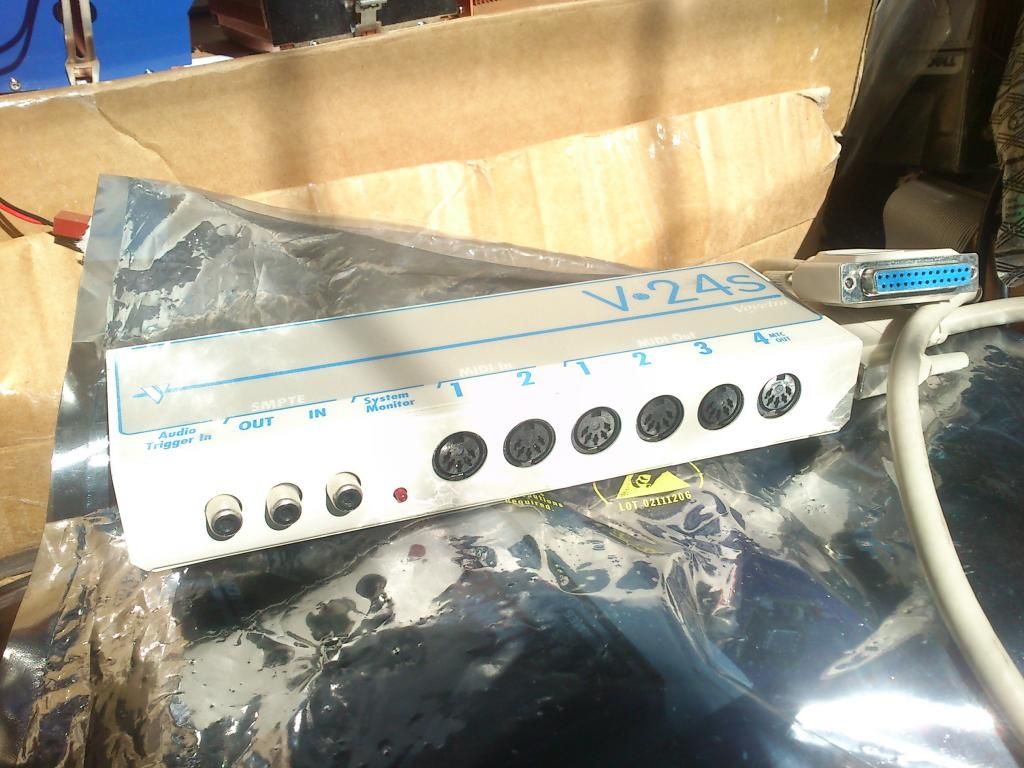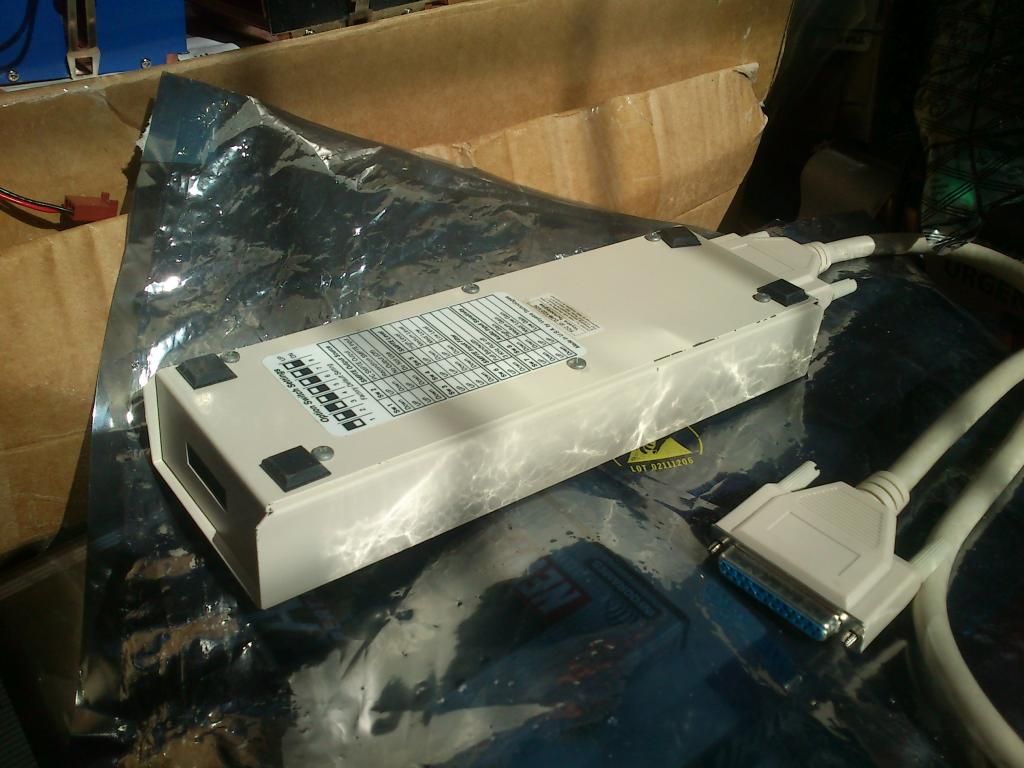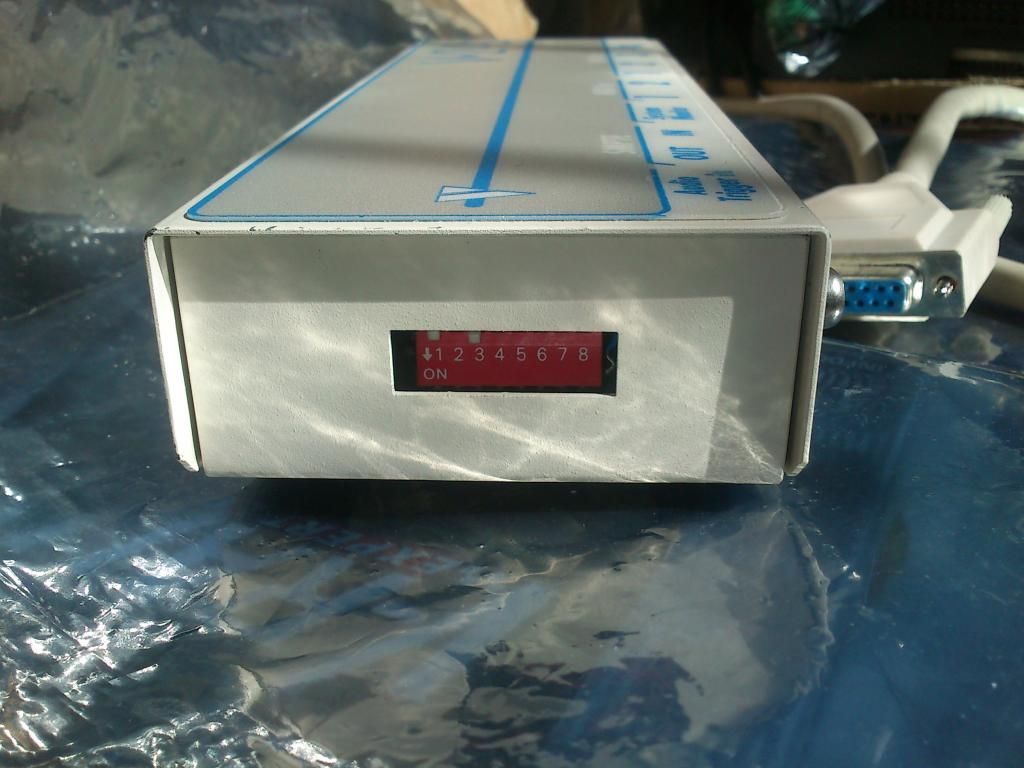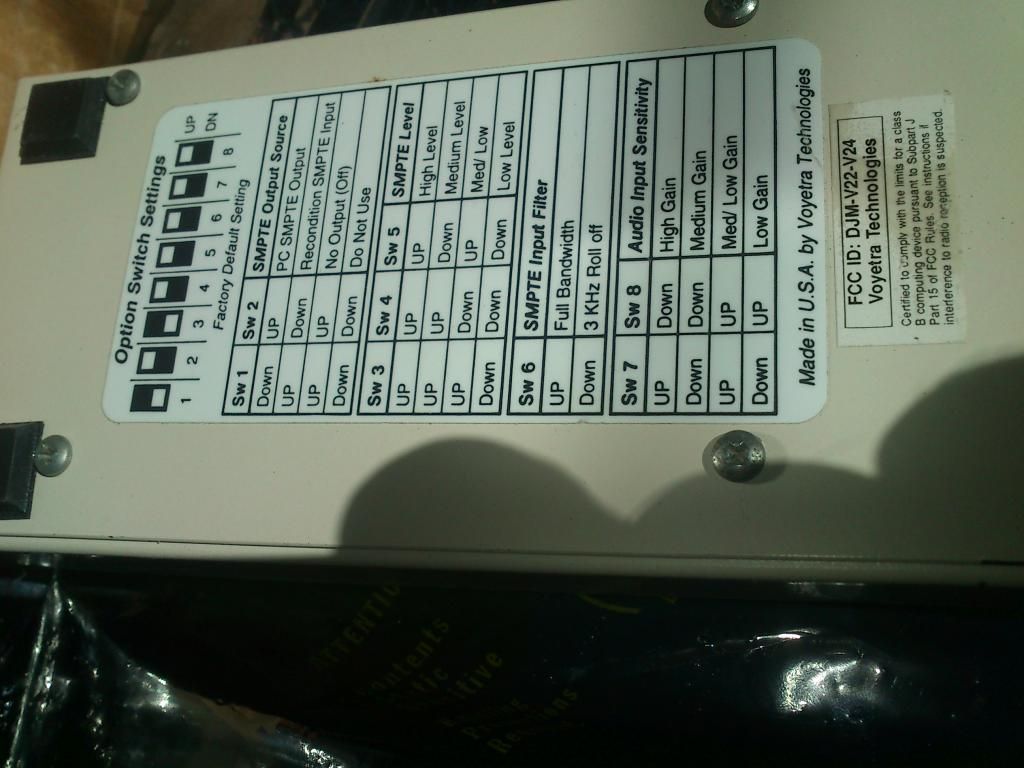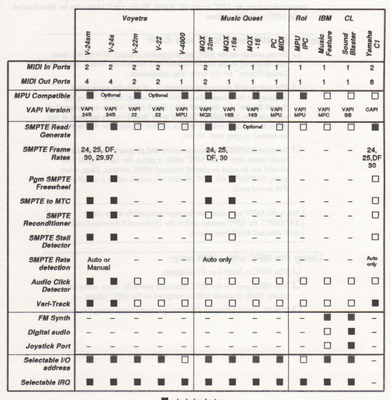First post, by jesolo
- Rank
- l33t
Hope someone can assist me.
Attached is a photo of a Voyetra V-22 MIDI interface card, with its MPU-401 compatible MIDI daughterboard on the right hand side.
The other two photo's shows what the MIDI interface cables looks like.
I seem to be having problems getting this card to function properly and want to know whether I'm missing something in terms of jumper settings, etc.
If you refer to the picture of the card, I've circled in different colours certain sections of the card.
The sections in red is where the daughterboard fits. You'll notice a jumper that was fitted on each of the two rows of pins, which I had to remove in order to fit the daughterboard.
Do I need to fit these jumpers someplace else?
The section circled in orange. What is the purpose of these row of pins? Do I need to short some of the pins?
The section circled in blue. You'll notice in the picture (and this is how it was when I obtained the card) there are a number of pins (16 in total) with one jumper shorting the first two pins on the left hand side and two jumpers shorting the first 4 pins on the right hand side. Do I need to make any changes there? What's the purpose of these jumpers?
The sections in green are the jumper settings for the port address (default is 330h) and the IRQ (default is 2). I managed to obtain some information on what the correct jumper settings are.
The base port address jumpers are on the left hand side (circled in green) and the IRQ jumpers are at the bottom (also circled in green).
I seem to be having a problem with the card when I select an IRQ jumper setting of 2 (the default setting). It's the jumper that is shorted on the right side (as shown in the picture).
In both Windows 95 and "real" DOS it doesn't seem to "find" the card at that IRQ setting. In DOS, I've tried to load the VAPI22.COM driver but, it gives me some error that it can't find the hardware.
When I change the jumper setting to use an IRQ of 7, it does find the card.
Another problem I've experienced (under Windows) is that, with an IRQ setting of 7, I can play MIDI files from Port 2 but, I get no signal from Port 1.
If you refer to the two pictures of the MIDI cables, then I presume the RED ones are the MIDI Out Ports (they are numbered 1 & 2 respectively) and the BLUE ones are the MIDI in ports (they are numbered A & B respectively).
What I'm actually trying to achieve is to set the card up to function is an MPU-401 MIDI interface but, as I understand it, this will only work via Port 1.
Also, many legacy games requires the MIDI interface to be set at the default settings of base port 330h and IRQ2 (9).
What am I missing or, do I have a faulty card and/or MIDI cables?
Does someone perhaps still have a manual for this particular card?
